In the evolving landscape of mobile technology, businesses are increasingly seeking ways to ensure their applications are accessible across multiple platforms. Cross-platform development has emerged as a solution, enabling developers to create applications that run seamlessly on both Android and iOS. This approach not only reduces the development time and costs associated with maintaining separate codebases for each platform but also ensures a consistent user experience across devices. By leveraging a single codebase, businesses can streamline their development processes, enhancing efficiency and delivering a uniform user experience.
- Flutter offers efficient cross-platform app development with a single codebase.
- Its advantages include a fast UI, hot reload, and excellent performance.
- App complexity affects development time, but Flutter streamlines the process.
Among the various tools available for cross-platform development, Flutter has rapidly gained traction as a leading framework. Developed by Google, Flutter empowers developers to build high-performance applications with a single codebase, ensuring consistency and efficiency. Its unique approach to app development, coupled with its robust set of features and support for native functionalities, makes it an ideal choice for business owners looking to create versatile and powerful applications. With Flutter, developers can harness the power of Google’s expertise and create applications that are not only visually appealing but also perform seamlessly across platforms.
What is Flutter Framework?
Flutter is an open-source UI software development toolkit created by Google. Initially released in 2017, Flutter has been designed to build natively compiled applications for mobile, web, and desktop from a single codebase. The framework utilizes the Dart programming language, which is also developed by Google, to create applications with beautiful interfaces and smooth animations. Flutter’s introduction to the world of cross-platform development marked a significant shift, offering developers a new way to build applications with ease and efficiency.
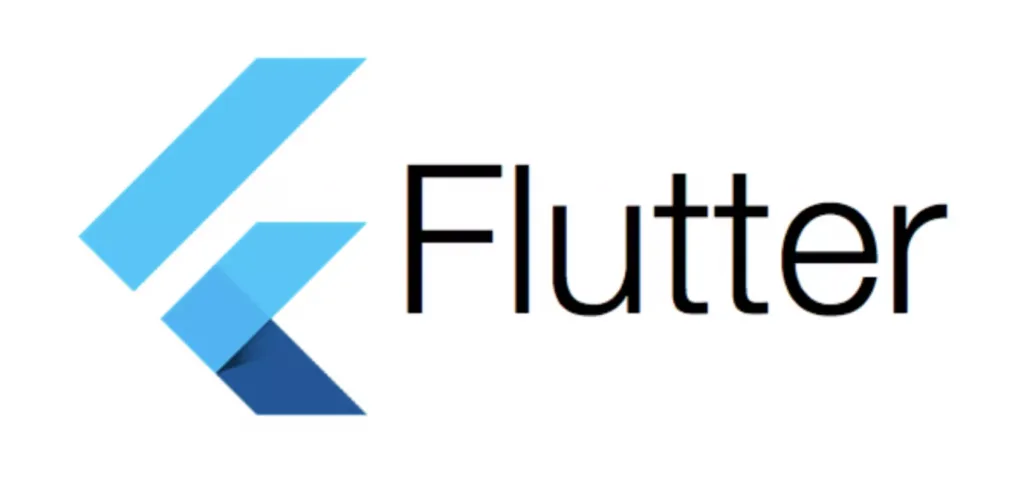
Architecture and Key Components
Flutter’s architecture, built around the concept of widgets, plays a crucial role in how to test Flutter apps effectively. Widgets serve as the fundamental elements of any Flutter application, organized in a widget tree to facilitate the creation of complex UIs from smaller, reusable components. The framework offers a comprehensive set of pre-designed widgets that adhere to Google’s Material Design, ensuring applications look and perform natively on both Android and iOS.
Testing Flutter apps involves evaluating these widgets and their interactions within the app. Flutter’s rendering engine, Skia, handles UI rendering across both platforms, giving developers granular control over every pixel and ensuring a consistent look and feel. This capability, combined with Flutter’s hot reload feature, enables developers to make real-time changes and see immediate results, streamlining both development and debugging processes.
Flutter’s ease of use and cross-platform capabilities make it stand out among other solutions.
The Droids on Roids
How Flutter Works?
Explanation of Flutter’s Programming Language
| Component | Description |
| Programming Language | Dart – Optimized for high-performance, cross-platform app development. Compiles native machine code, providing fast execution and a smooth user experience. |
| Framework | Flutter Framework – Utilizes the Dart programming language, offering tools and widgets for building responsive, high-quality apps. |
| Engine | Flutter Engine – Written in C++, it handles rendering, input/output management, and interfacing with platform-specific SDKs, ensuring efficient app performance. |
| Platform-Specific Embedders | Embedders – Serve as a bridge between the Flutter engine and the underlying operating system. They manage platform-specific functions like drawing windows, handling input events, and integrating with system features, ensuring access to native capabilities and consistent user experience across platforms. |
Description of Its Rendering Engine and Widget System
Flutter’s rendering engine, Skia, is a powerful and flexible 2D graphics library that provides the foundation for rendering the app’s UI. Skia allows Flutter to draw directly to the canvas of the device, enabling developers to have precise control over every pixel. This control results in smooth animations and visually appealing interfaces, which are crucial for modern app design.
The widget system is at the core of Flutter’s UI design. Widgets in Flutter are immutable and describe a part of the UI. Flutter provides a rich set of widgets that follow both Material Design and Cupertino design specifications, ensuring that apps look and feel natural on both Android and iOS devices. Developers can also create custom widgets, offering the flexibility to design unique and tailored user interfaces.
How It Differs from Other Cross-Platform Frameworks
Flutter stands out from other cross-platform frameworks like React Native and Xamarin in several key ways, making it a preferred choice for cross-platform app development. Unlike React Native, which uses a bridge to communicate between JavaScript and native code, Flutter compiles directly to native machine code. This approach eliminates the need for a bridge, resulting in faster performance and reduced latency.
Flutter’s single codebase approach also differs from Xamarin, which allows for shared code but often requires separate platform-specific UI code. Flutter’s use of widgets and a consistent rendering engine enables developers to create visually consistent apps without needing separate UI code for each platform.
Advantages of Flutter App Development
- Faster Development and Deployment: Flutter significantly accelerates the app development process thanks to its innovative features like the hot reload function. This capability allows developers to see changes in the code instantly reflected in the app, without the need to restart or recompile the entire project. This immediate feedback loop not only enhances the productivity of developers but also speeds up the process of prototyping and iterating on designs. Furthermore, the use of a single programming language, Dart, for both frontend and backend development simplifies the workflow, reducing the complexity and time required for development and deployment.
- Single Codebase for Multiple Platforms: One of Flutter’s most appealing benefits is its ability to use a single codebase to create applications for multiple platforms, including Android, iOS, web, and desktop. This means that developers no longer need to write and maintain separate code for each platform, which drastically reduces the effort and costs involved in cross-platform development. Businesses can quickly launch their applications on multiple platforms, ensuring a wider reach and a consistent experience for users regardless of the device they use.
- High Performance and Responsive UI: Flutter’s architecture and use of Dart, which compiles native code, result in high-performance applications with fast startup times and smooth animations. The Skia rendering engine provides a seamless and responsive user interface, with a refresh rate of 60 or 120 frames per second, depending on the device. This ensures that Flutter apps deliver a native-like performance, offering users a fluid and enjoyable experience.
- Rich Pre-Built UI Components: Flutter comes with an extensive library of pre-built UI components that adhere to Material Design and Cupertino standards. These components are not only aesthetically pleasing but also highly customizable, allowing developers to create unique and engaging user interfaces. The availability of these widgets saves developers significant time, as they do not need to design UI elements from scratch. Moreover, the consistent look and feel across different platforms enhance the user experience, making Flutter an excellent choice for building professional and polished applications.
- Community Support and Frequent Updates: Flutter boasts a vibrant and growing community of developers who contribute to its continuous improvement and evolution. This strong community support ensures that developers have access to a wealth of resources, tutorials, and third-party libraries, making it easier to overcome challenges and implement complex features. Additionally, Google’s commitment to Flutter is evident through its frequent updates and enhancements, which keep the framework at the cutting edge of technology and trends. This constant evolution ensures that Flutter remains a reliable and future-proof choice for cross-platform app development.
Flutter Disadvantages
Limitations in Native Functionality
While Flutter provides extensive support for cross-platform app development, it still encounters some limitations regarding access to platform-specific functionalities. Certain advanced features that are readily available in native SDKs might require additional effort to integrate into Flutter apps. Developers often need to write platform-specific code using native languages like Kotlin or Swift to bridge the gap between Flutter and the native APIs, potentially increasing the complexity and time required for development.
Potential Issues with Large App Sizes
Flutter applications are typically larger in size compared to their native counterparts. The framework includes the engine and necessary libraries in the app package, contributing to an increased app size. For some businesses, particularly those targeting users in regions with limited data plans or lower-end devices, this can be a disadvantage as larger app sizes may deter users from downloading or updating the application.
Smaller Developer Ecosystem Compared to Native SDKs
Despite its growing popularity, Flutter’s ecosystem is still relatively smaller compared to the well-established communities of native Android and iOS SDKs. This can result in fewer third-party libraries, tools, and plugins available for specific use cases. As a result, developers might need to spend more time creating custom solutions or integrating third-party services, which could slow down the cross-platform app development process. Additionally, the availability of experienced Flutter developers is currently more limited than those proficient in native SDKs, potentially making it more challenging for businesses to hire talent or outsource projects.
How Fast is Flutter App Development?
When comparing the development speed of Flutter to native and other cross-platform frameworks, Flutter stands out due to its unique features and streamlined workflow. Native development typically requires separate codebases for Android and iOS, which can lead to increased development time and effort. In contrast, Flutter allows developers to write a single codebase for multiple platforms, significantly reducing the time and resources needed to build and maintain the app.
Compared to other cross-platform frameworks like React Native and Xamarin, Flutter offers a more integrated and efficient development experience. Flutter’s hot reload feature is a game-changer, allowing developers to instantly see the effects of code changes without restarting the application. This results in a faster feedback loop and a more dynamic development process. Additionally, Flutter’s comprehensive set of pre-built widgets and its use of the Dart programming language, which is both expressive and easy to learn, further accelerates the development process compared to frameworks that rely on separate languages for logic and UI.
Examples of Rapid Prototyping and Iteration Capabilities
Flutter’s rapid prototyping capabilities are exemplified through its hot reload feature and its flexible widget system. Developers can quickly build and test UI changes, experiment with different design elements, and iterate on functionality in real time. This not only speeds up the prototyping phase but also allows for more creative exploration and innovation during development.
For instance, a development team working on a new feature can implement and test multiple UI designs in a matter of minutes, gathering immediate feedback and refining the user experience without significant delays. This ability to rapidly prototype and iterate enables businesses to adapt to changing requirements or user feedback swiftly, ensuring that the final product meets the desired specifications and quality standards.
Looking for a developer to build cross-platform apps?
Contact UsApps Developed on Flutter
Several well-known apps have been developed using Flutter, showcasing the framework’s versatility and capability to create high-quality, cross-platform applications. Some popular apps include:
1. Google Ads
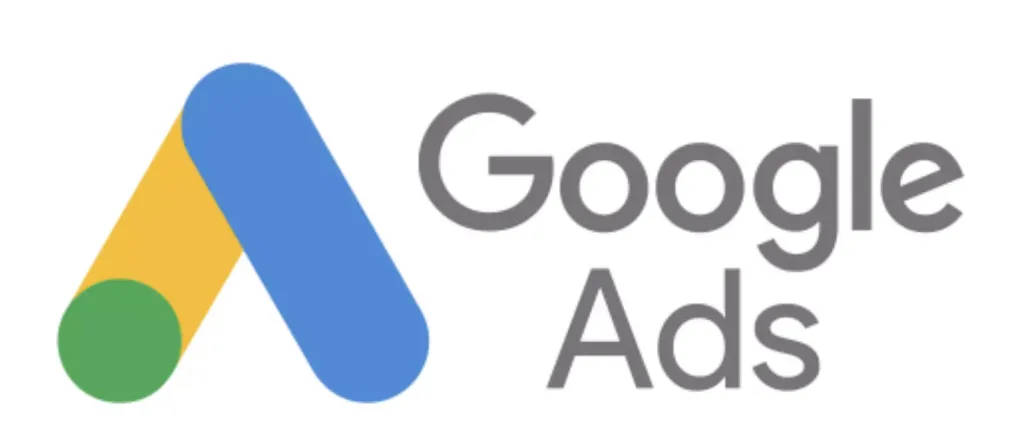
This app allows advertisers to manage their ad campaigns from their mobile devices. It provides a seamless and intuitive user experience, demonstrating Flutter’s capability to handle complex functionalities.
2. Alibaba
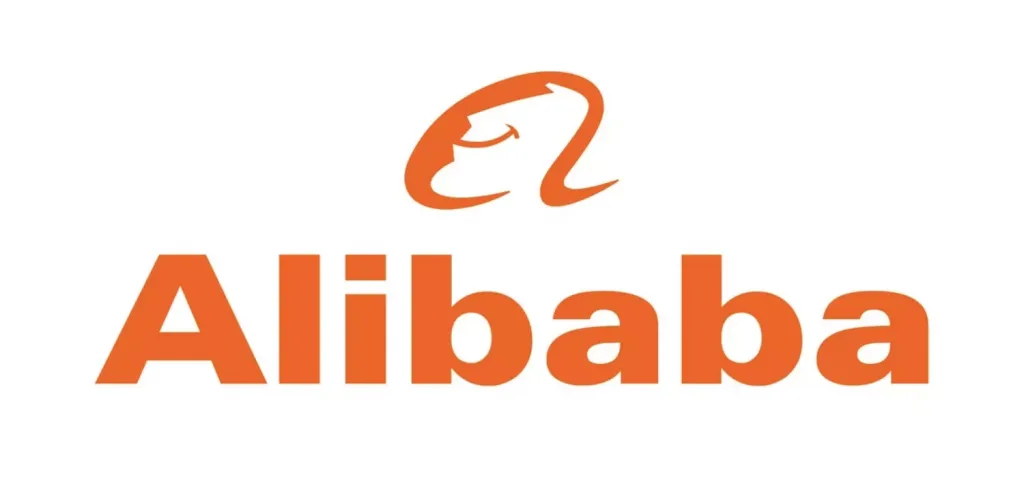
The e-commerce giant used Flutter to develop parts of their app, which serves millions of users worldwide. This decision highlights Flutter’s ability to scale and provide robust performance under heavy loads.
3. Reflectly
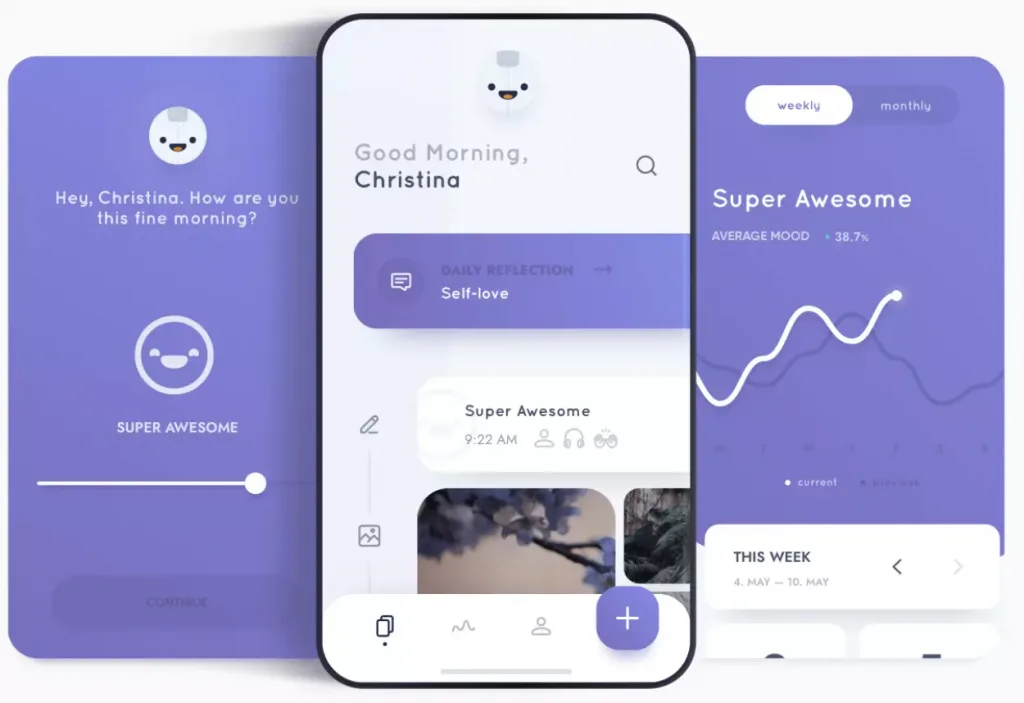
This popular mindfulness and journaling app features a sleek, modern design and smooth animations, all crafted with Flutter. It’s a prime example of how Flutter can be used to create visually appealing and interactive user interfaces.
4. Hamilton: The Official App

Fans receive a seamless experience from the official “Hamilton” app, which offers information, ticket reservations, and exclusive content.
5. Watermaniac
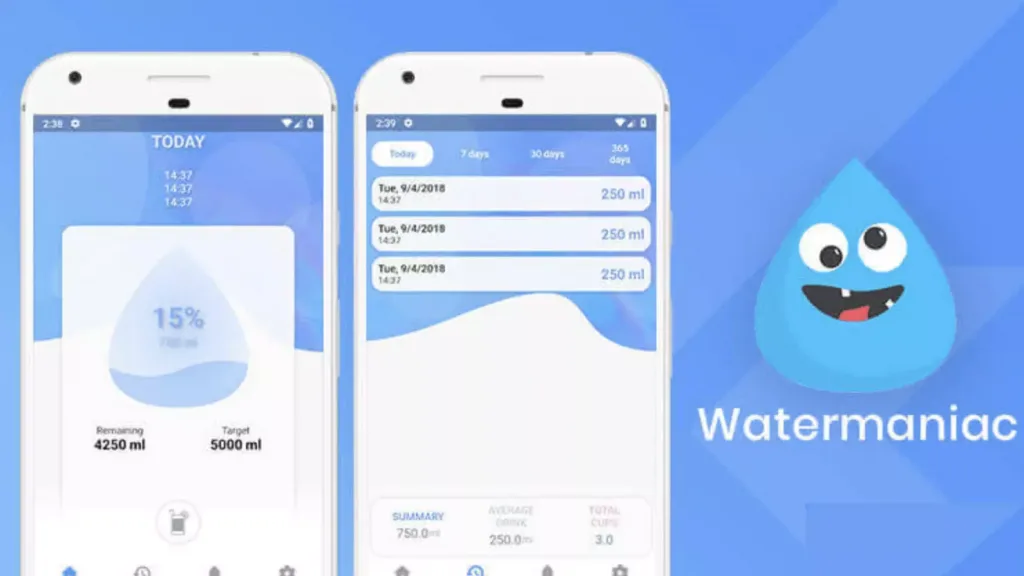
A health and fitness app called Watermaniac encourages users to drink water frequently throughout the day.
6. Birch Finance

A financial management app that helps users track their spending and manage their finances effectively. Built with Flutter, the app provides a clean and responsive UI, proving that Flutter is well-suited for data-heavy applications.
7. Hookle
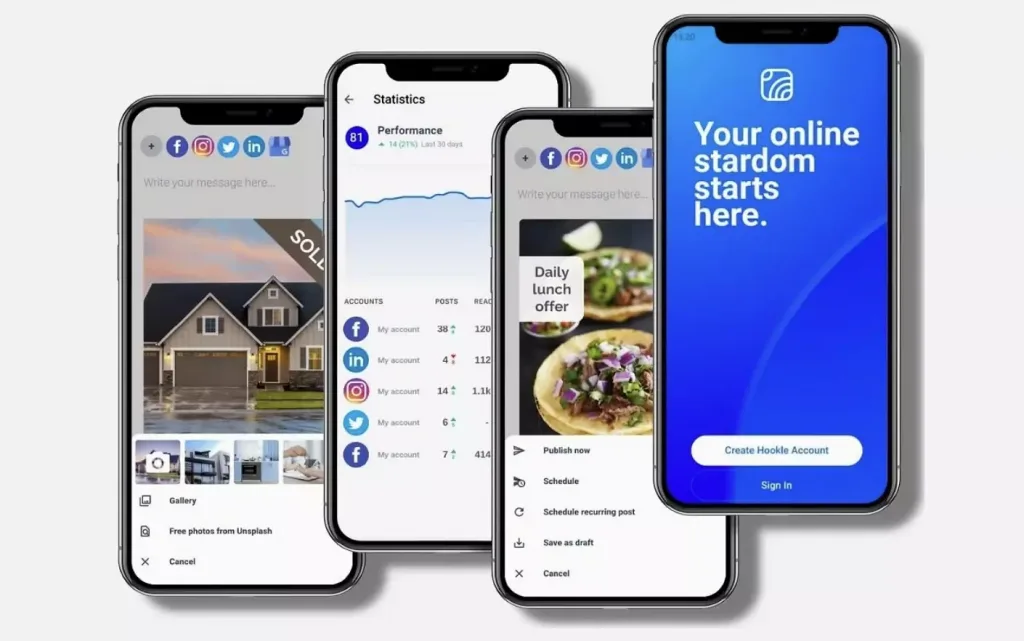
Hookle offers a seamless user experience while allowing users to manage multiple social media accounts from a single platform.
8. Cryptograph
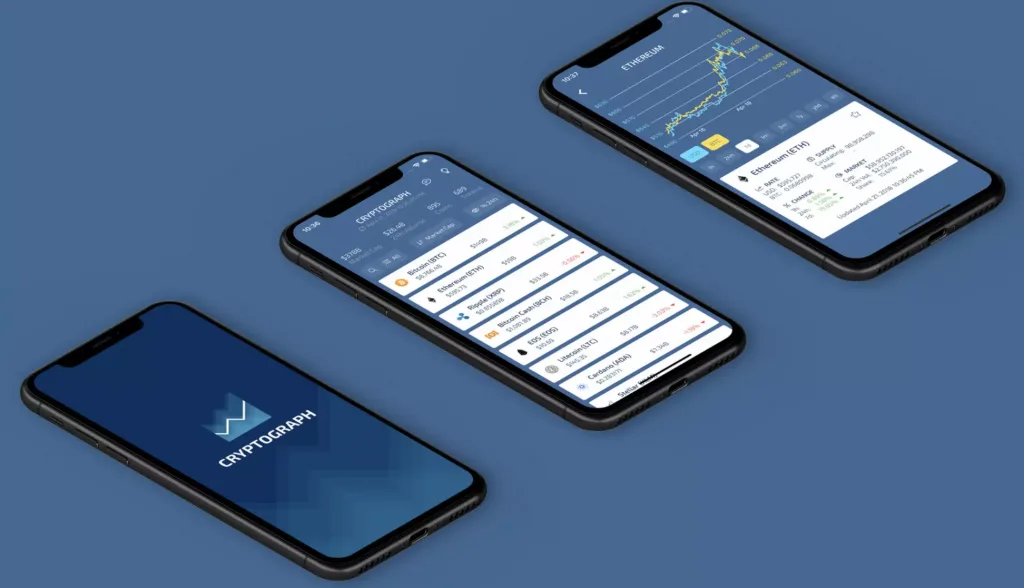
A cryptocurrency portfolio app called Cryptograph provides real-time tracking of digital assets.
Success Stories and Case Studies from Different Industries
Flutter has proven successful across various industries, including e-commerce, finance, social media, and entertainment. Here are a few case studies highlighting Flutter’s impact:
- Realtor.com: One of the leading real estate platforms in the U.S. leveraged Flutter to improve the performance and reliability of its app. By adopting Flutter, Realtor.com could maintain a single codebase for Android and iOS, significantly reducing development and maintenance costs. The result was a more responsive and user-friendly app that enhanced the user experience.
- Philips Hue: The smart lighting system developed by Philips integrated Flutter into their mobile app to ensure a smooth and consistent experience across platforms. Flutter’s rich widget library allowed for a seamless integration of features, improving the app’s usability and overall user satisfaction.
- Hamilton Musical: The official app for the hit Broadway musical “Hamilton” was built with Flutter to provide fans with a rich multimedia experience, including exclusive videos, news, and trivia games. The app’s ability to offer a visually engaging and interactive experience on both Android and iOS platforms was a testament to Flutter’s capabilities.
Why is Flutter Such a Popular SDK?
Key Factors Contributing to Flutter’s Popularity
Several key factors contribute to the widespread popularity of Flutter among developers and businesses alike:
- Fast Development Cycles: Flutter app development benefits from the hot reload feature, which allows developers to see changes in real time without restarting the app, significantly speeding up the development process. This capability makes prototyping and iterative development faster and more efficient.
- Single Codebase: With Flutter, developers can write one codebase for multiple platforms, reducing the time and resources needed to develop, test, and maintain applications across Android, iOS, web, and desktop.
- Rich and Customizable Widgets: Flutter app provides a comprehensive set of widgets that adhere to both Material Design and Cupertino standards, allowing developers to create aesthetically pleasing and highly customizable user interfaces.
- High Performance: Flutter’s architecture, which uses the Dart programming language compiled to native code, ensures that apps have fast startup times and smooth performance, rivaling those developed natively.
- Strong Community and Support: Flutter boasts a vibrant community and strong support from Google, providing developers with extensive resources, libraries, and frequent updates to keep the framework at the forefront of technology.
Future Prospects of Flutter
Flutter app development has a promising roadmap that includes several exciting features and enhancements:
- Desktop and Web Support: Flutter is expanding its support to include desktop applications for Windows, macOS, and Linux, as well as enhanced web application capabilities. This broadens the potential reach of Flutter apps and allows developers to target an even wider audience with a single codebase.
- Improved Tooling and Debugging: The development team behind Flutter app is continually enhancing the tooling and debugging experience, making it easier for developers to build, test, and optimize their applications.
- Augmented Reality and 3D Graphics: Future updates may include more robust support for augmented reality and 3D graphics, enabling developers to create more immersive and engaging applications.
Predictions for Flutter’s Role in the App Development Ecosystem
Given its rapid growth and adoption, Flutter is poised to play a significant role in the future of app development. Its ability to provide a consistent and high-quality user experience across multiple platforms, combined with the ease of development and maintenance, makes it an attractive choice for businesses and developers.
As the framework continues to evolve and incorporate new features, Flutter is likely to become even more dominant in the cross-platform development space. Its strong community support and backing by Google ensure that Flutter will remain a cutting-edge tool, capable of meeting the demands of modern app development and adapting to future technological trends. Businesses that adopt Flutter can expect to stay ahead of the curve, delivering innovative and high-performing applications to their users.
Ficus Technologies’ Use of Flutter
At Ficus Technologies, we’ve embraced Flutter as a key component of our cross-platform app development strategy, recognizing its potential to deliver high-quality applications efficiently. Flutter’s hot reload feature has been a game-changer, allowing us to implement real-time changes and streamline bug fixes, speeding up the development process. Flutter’s versatility allows us to confidently tackle projects across various industries, from e-commerce and social media to healthcare and finance. The growing Flutter community and ecosystem further enhance our capabilities, providing access to a wealth of tools and plugins that help us enhance our apps with cutting-edge features.
Challenges Faced and Solutions Implemented
As with any new technology, we encountered challenges during our transition to Flutter. One significant challenge was integrating platform-specific features, which required a deeper understanding of both Flutter and native APIs. To address this, our team implemented a hybrid approach, combining Flutter’s capabilities with native code where necessary. This allowed us to leverage Flutter’s cross-platform advantages while maintaining the functionality of platform-specific features. Another challenge was optimizing app size and performance, particularly for applications with extensive data and complex functionalities. We tackled this by employing best practices for code optimization, reducing the use of third-party libraries, and leveraging Flutter’s own performance monitoring tools to identify and address bottlenecks.
Final Thought
Flutter has been a transformative tool for Ficus Technologies, enabling us to deliver high-quality, cross-platform applications that meet and exceed our clients’ expectations. Its unique features, such as hot reload and a single codebase, have significantly streamlined our development process and enhanced our efficiency. Despite the challenges, our solutions and strategies have proven effective, leading to successful outcomes for our clients.
As Flutter continues to evolve, we are excited about the future possibilities it presents. We remain committed to leveraging Flutter’s capabilities to innovate and provide top-tier app development services. For businesses looking to create responsive, user-friendly, and visually stunning apps, Flutter offers a compelling solution that balances speed, performance, and cost-effectiveness.
To explore how Flutter can benefit your projects and to discuss your app development needs, contact us.
Yes, Flutter is capable of building web and desktop applications in addition to mobile apps. With Flutter for the web, you can develop interactive and visually rich web applications using the same codebase as for mobile apps. For desktop applications, Flutter supports Windows, macOS, and Linux, allowing developers to create applications across these platforms while maintaining consistency in development.
Flutter offers performance that is often on par with native app development. This is because Flutter apps are compiled directly into native machine code using the Dart programming language, which eliminates the need for a JavaScript bridge, as seen in some other frameworks. This direct compilation leads to faster startup times and smoother animations. Although native apps might still have a performance edge in specific cases requiring deep integration with platform-specific features, Flutter’s rich widget set and efficient rendering engine ensure a high level of performance and responsiveness.
To learn Flutter, there are a variety of resources available. The official Flutter documentation provides detailed guides and API references. The Flutter YouTube channel offers video tutorials and live coding sessions. Additionally, online learning platforms like Udemy, Coursera, and edX offer structured courses. Community forums and groups such as Stack Overflow and the Flutter Community on Medium are valuable for asking questions and exchanging knowledge. Books like “Flutter for Beginners” and “Flutter in Action” also provide comprehensive insights into Flutter development.
Whether Flutter is better than React Native depends on your project’s needs and the development team’s preferences. Flutter often excels in performance due to its direct compilation of native code and the absence of a JavaScript bridge. It also allows for faster development with its hot reload feature and a consistent UI across platforms using its customizable widgets. However, React Native has a larger community and a more mature ecosystem, which can be advantageous for finding support and integrating third-party libraries. The decision should be based on specific project requirements and long-term maintenance considerations.
Flutter uses Dart, a programming language developed by Google. Dart is designed to build fast and scalable applications, and it offers a syntax that is easy to learn, especially for those familiar with object-oriented programming languages. Dart’s strong typing, asynchronous programming features, and a comprehensive standard library make it a robust choice for developing applications across multiple platforms.









For those considering cross-platform app development, this article offers a clear and concise explanation of why Flutter has gained popularity. It underscores Flutter’s benefits, including a single codebase for multiple platforms and a fast UI development process, making it an appealing choice for developers and businesses.